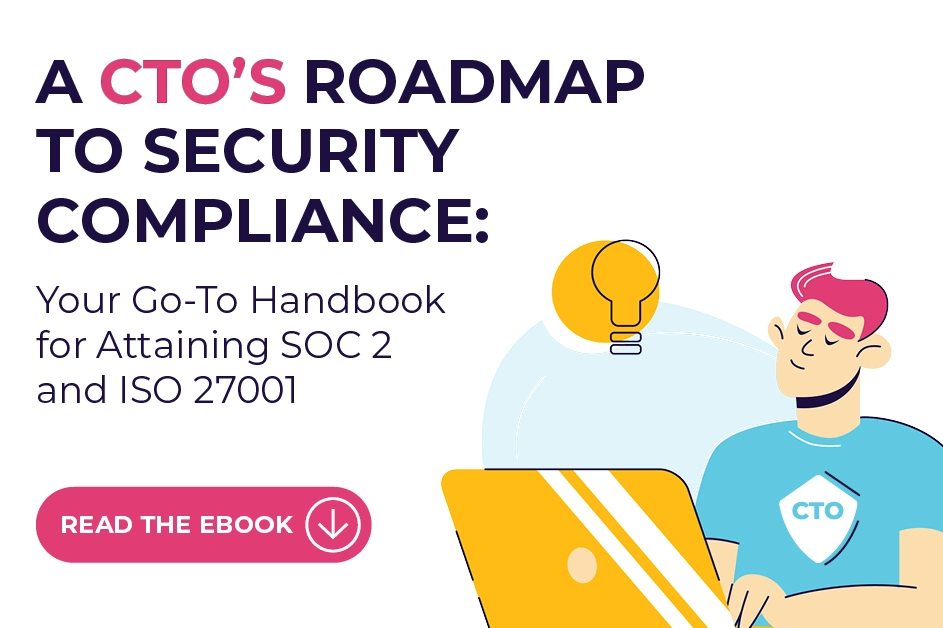Introduction to Penetration Testing
Penetration testing, or pen testing for short, is like a “friendly” cyberattack, where ethical hackers simulate attacks on your system, network, or application to uncover weaknesses before malicious actors do. For Software as a Service (SaaS) companies, where software is cloud-based and often handles sensitive customer data, implementing software penetration testing is a must. It’s more than just finding vulnerabilities, it’s about protecting your business, maintaining compliance, and building trust with your customers.
Penetration testing involves using various tools and techniques to check for security gaps. These include weaknesses in your software applications, networks, or cloud environments. With the growing reliance on cloud services, cloud penetration testing has become a key piece of the puzzle. By regularly running these tests, SaaS companies can identify and fix vulnerabilities before cyber attackers can exploit them.
Importance of Penetration Testing for Compliance Software
For SaaS companies, staying compliant with frameworks like PCI DSS (Payment Card Industry Data Security Standard) and SOC 2 isn’t just a box to tick. It’s vital for securing customer data and keeping the trust you’ve worked hard to build.
PCI DSS Penetration Testing
If your SaaS platform handles payment data, PCI DSS penetration testing is a non-negotiable. This testing focuses on securing payment data and making sure your system is tough enough to fend off breaches. Since payment information is one of the most sensitive data types, compliance comes with strict security rules, like:
- Regular security tests: You’ll need to conduct security penetration testing at least once a year or after any significant system change.
- Secure systems and applications: This means keeping your software and systems updated and protected from known vulnerabilities.
- Tight access control: Limiting access to sensitive payment data to only those who need it based on their roles.
By conducting regular PCI DSS penetration testing, SaaS companies can catch and patch any weak points in their payment systems, keeping attackers at bay and avoiding fines for non-compliance.
GET PCI DSS COMPLIANT 90% FASTER
SOC 2 Penetration Testing
For SaaS companies, protecting customer data is a priority. That’s where SOC 2 penetration testing comes into play. SOC 2 evaluates the security controls you have in place to ensure customer data stays confidential. SOC 2 is especially relevant for companies that store or process sensitive customer info. The five main principles of SOC 2 are:
- Security: Protecting against unauthorized access.
- Availability: Making sure systems are ready and available when needed.
- Processing integrity: Ensuring that your system processes data accurately and correctly.
- Confidentiality: Safeguarding any data marked confidential.
- Privacy: Respecting and protecting personal information according to your privacy policy.
Through SOC 2 penetration testing, SaaS companies can assess how well they’re adhering to these principles and make improvements where needed. It’s not just about keeping up appearances; it’s about ensuring your business is truly secure.
GET SOC 2 COMPLIANT 90% FASTER
Types of Penetration Testing
When it comes to pen testing, not all tests are created equal. The type of penetration testing you choose depends on the scope of the assessment and what you’re looking to achieve.
Black Box Testing
In black box testing, testers go in blind—they have no prior knowledge of the system’s architecture or code. This approach mimics an external hacker’s perspective. Testers try to break in without any inside information, giving you an understanding of how a real-life attacker might infiltrate your defenses.
White Box Testing
In contrast, white box testing gives testers full access to the system’s architecture and source code. This approach allows for a deep dive into the security landscape, helping to catch vulnerabilities that might go unnoticed in a black box test. By seeing everything from the inside, testers can zero in on potential security flaws more thoroughly.
Gray Box Testing
As the name suggests, gray box testing is somewhere in between. Testers are given some knowledge of the system—maybe access credentials or a few details about the infrastructure. This method allows testers to simulate an attack from both the inside and outside, helping to spot vulnerabilities that might not be obvious with just one approach.
Automated Penetration Testing
For larger systems or when time is tight, automated penetration testing can be a real lifesaver. Using specialized tools, automated pen testing can simulate a wide range of cyberattacks quickly and at scale. While automated tools can’t replace human insight, they’re perfect for running broad scans to identify known vulnerabilities before a more thorough manual test.
Penetration Testing Frameworks
You don’t have to start from scratch with penetration testing—there are frameworks that provide guidelines and best practices. Using these frameworks can streamline the process and ensure that no stone is left unturned.
OWASP Testing Guide
The OWASP Testing Guide is a go-to for web application security. It provides a detailed approach to uncovering common web vulnerabilities like SQL injections and cross-site scripting (XSS). If your SaaS platform is web-based, this guide should be at the top of your list.
NIST SP 800-115
NIST SP 800-115 is a comprehensive framework for conducting security penetration testing. Originally designed for federal agencies, it’s become a widely recognized resource across industries. It’s particularly valuable because it covers everything from planning and conducting tests to reporting and remediation. Following NIST’s guidelines can help ensure your penetration tests are thorough and compliant with best practices.
PTES (Penetration Testing Execution Standard)
PTES is another widely recognized framework that breaks down the penetration testing process step by step, from the initial planning phase to post-test reporting. It covers aspects like scoping, threat modeling, exploitation, and post-exploitation activities. Following a standard like PTES ensures a consistent, repeatable process, so you know all your bases are covered every time you conduct a test.
Compliance and Regulatory Considerations for Penetration Testing
For SaaS companies, regular penetration testing isn’t just about being security-savvy—it’s often a compliance requirement. Regulations like PCI DSS, SOC 2, and even ISO 27001 have specific guidelines around penetration testing that must be followed.
Frequency of Testing
Most regulations, like PCI DSS, require regular penetration tests—typically once a year and after significant system changes. Staying on top of these tests helps ensure that your systems remain compliant and secure over time. With PCI DSS penetration testing and SOC 2 penetration testing, you’re not only meeting legal obligations but also protecting your reputation and customer trust.
Scope Definition
When conducting a penetration test, it’s crucial to clearly define the scope—what systems, applications, and networks will be tested. A well-defined scope helps ensure that you’re targeting the most critical assets while minimizing disruptions to your operations. Whether it’s automated penetration testing or more detailed manual testing, clarity in scope is essential.
Documentation and Reporting
Detailed reports are a must for compliance. After testing, reports should document findings, explain remediation efforts, and outline follow-up actions. Good documentation makes it easy to show auditors and regulators that you’re staying compliant and taking security seriously. Plus, it serves as a roadmap for improving your security posture over time.
Penetration Testing Certification
Working with certified penetration testers brings an added layer of assurance that your tests are thorough and up to industry standards. Certifications like CEH (Certified Ethical Hacker) and OSCP (Offensive Security Certified Professional) indicate that the tester has the expertise needed to conduct reliable security assessments. This is especially important when presenting test results to stakeholders or auditors—having certified professionals ensures credibility and confidence in your penetration testing certification efforts.
Developing a Penetration Testing Plan
Without a solid plan, even the best penetration testing efforts can fall flat. A well-thought-out penetration testing plan ensures your tests are effective and aligned with your company’s goals.
Key elements to consider:
- Objectives: What’s the end goal of the test? Are you trying to find specific vulnerabilities, or are you assessing the overall security posture?
- Scope: Be clear about what systems will be tested. Don’t forget to account for compliance requirements that might affect the scope.
- Methodology: Choose the right approach. Will you go with black box testing to simulate an external attack, white box for an in-depth review, or automated penetration testing for faster results?
- Resources: Will you rely on internal teams or bring in outside experts?
- Timeline: Set realistic timeframes for the testing process, from planning to execution and reporting.
- Remediation strategy: Make sure you have a plan to fix any vulnerabilities found during the test.
- Review process: After the test, bring your team together to review the findings and discuss next steps.

The Ongoing Need for Penetration Testing
Penetration testing is an essential part of securing your SaaS company’s software, networks, and cloud environments. Whether it’s for compliance purposes or to stay ahead of potential cyber threats, regular testing helps protect sensitive data and keeps your systems strong. From cloud penetration testing to PCI DSS penetration testing, a structured approach to security penetration testing ensures you’re covered from all angles.
By following best practices, utilizing frameworks, and maintaining a solid penetration testing plan, your SaaS business can proactively address vulnerabilities and maintain customer trust. As cyber threats evolve, penetration testing should remain a core part of your security strategy. The key takeaway: Don’t wait until an attack happens—test early, test often, and stay ahead of the curve.
Choose Scytale for all your Penetration Solutions
At Scytale, we offer a powerful suite of penetration testing solutions designed with SaaS companies in mind. Our approach combines automated assessments with expert manual testing, ensuring that you can quickly identify and fix vulnerabilities across your digital infrastructure without missing a beat.
What sets us apart is our focus on compliance penetration testing. We get it—navigating regulatory frameworks like SOC 2, ISO 27001, or GDPR can feel overwhelming. That’s why we’ve built our tools to do more than just uncover security weaknesses; we ensure you’re meeting all the right compliance requirements while doing so. It’s like hitting two birds with one stone—keeping your security tight while staying audit-ready.
Our platform is also super user-friendly, which is key if your team doesn’t have tons of cybersecurity expertise. We break down complex technical findings into clear, actionable insights, so you know exactly where to focus your efforts. No more sifting through endless data—just straightforward reporting that helps you act fast.
Plus, we don’t leave you hanging. Our team of compliance experts is with you every step of the way, offering guidance as you prep for audits or handle security-related questions from your clients. You’re not just getting a service—you’re getting a partner who knows the ins and outs of compliance.
And we don’t stop at traditional pen testing. Whether it’s web applications, mobile apps, or APIs, we cover every aspect of your digital ecosystem, ensuring no stone is left unturned.
With Scytale, you’re not just staying secure—you’re staying compliant and ahead of the curve, ready to tackle whatever the threat landscape throws at you.








